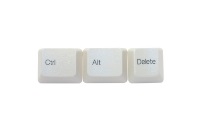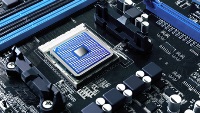Its important for developers to have fast machines. I tend not to go for the absolutely latest tech. but my machines are always fairly up to date and new.
I’ve used Intel based motherboards for a while which have Intel Rapid Start technology, the idea being that you have a SSD drive that is used to copy the entire RAM of the machine when the computer sleeps so that waking up can then be really fast.
Yesterday I upgraded my Windows 7 development machine to 32GB of RAM from 16GB, which meant I had to resize the partition that Intel Rapid start uses on the startup SSD. This got me thinking.
The configuration is two 512 GB Samsung SSD’s in RAID mirror format that contains my C (Boot) drive and E (data) drive along with a 60GB OCZ SSD that I use for the D (temp) drive (this is a throw back from my Unix days although Windows doesn’t properly use the temp drive at least I can re-install the OS without losing my data on E).
 I cursed it at times because I had forgot you have to add a margin to the size of the partition used for Rapid Start. I added 6GB in the end so 40GB to handle my 32GB of RAM.
I cursed it at times because I had forgot you have to add a margin to the size of the partition used for Rapid Start. I added 6GB in the end so 40GB to handle my 32GB of RAM.
Anyway, I timed the machine waking up from sleep without the Intel Rapid Start technology enabled. It took 10-11 seconds. When I eventually finished cursing and got Intel Rapid Start working, I found the wake from sleep time was 30-35 seconds, and when the login screen appeared, it annoyingly wouldn’t let me type for another 10 seconds or so.
I then went to my other development machine, which has a similar chipset, but Windows 8.1 and Seagate 1GB Hybrid drives and turned off the Intel Rapid Start. The wake up from sleep time went from around 20 seconds down to 6 seconds.
So the moral of this story? It is to practice what I preach! I never ever consider code optimisation without measuring the performance first to find out where the code is slow and if its worth optimising. However I had been waking both my machines from sleep every day and wasting 30 seconds for no reason because I hadn’t recently checked the performance since upgrading my drives about 2 years ago!

Leave a Reply